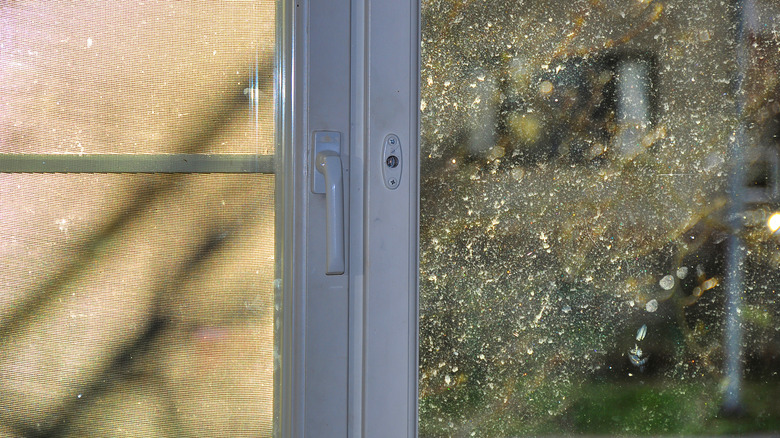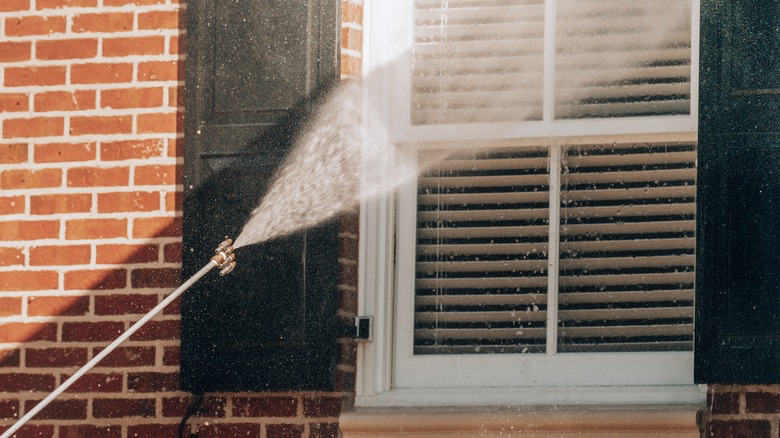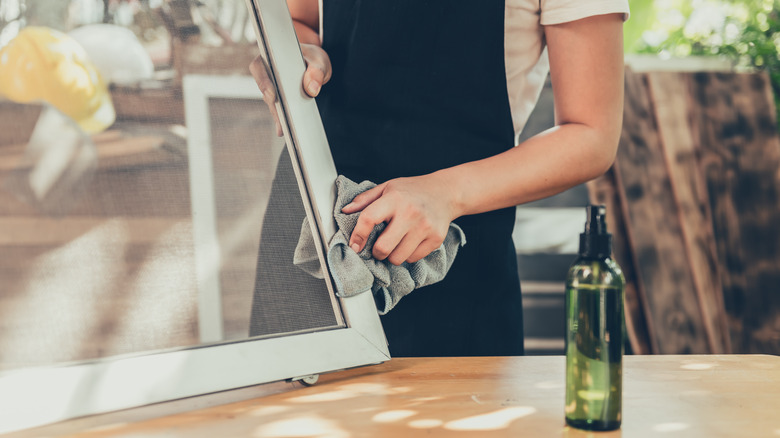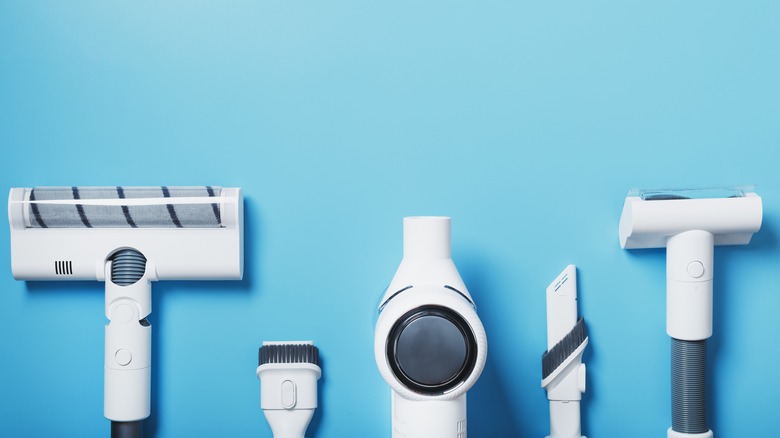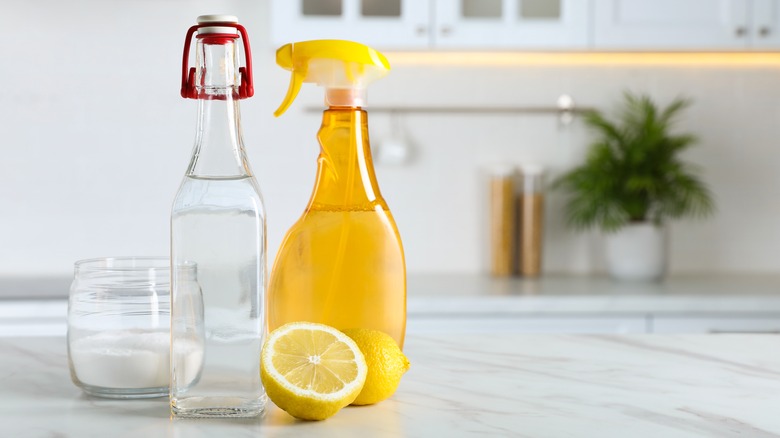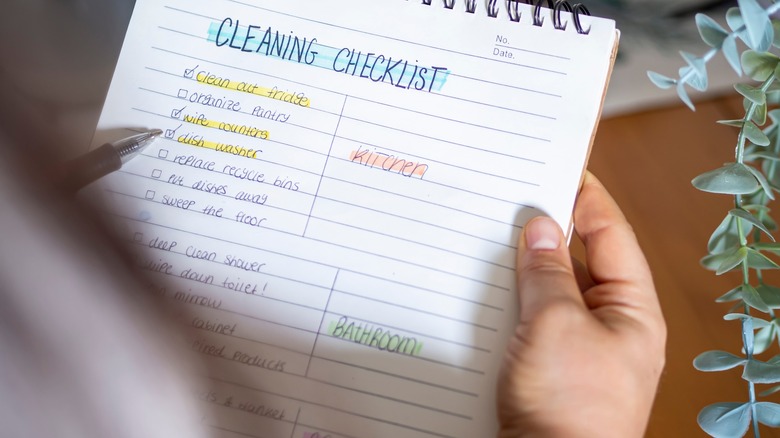Pollen On Your Windows Is Frustratingly Unavoidable: Here Are 5 Surefire Ways To Combat It
Spring means more sunlight, fresh flowers, and pollen. For many of us, this powdery substance is a major nuisance. Not only can it trigger allergies and cause our noses to run and our eyes to water, but it also has a habit of sticking onto our windows and creating an unsightly mess. Spring is known as the rainy season. So, after a few rain showers, the pollen on your windows, which is likely mixed with dust and other substances, will transform into a filthy residue.
Allowing pollen to build up on your windows can also ruin the overall design and ambiance of your home. It won't matter if you have large, modern windows if you can't clearly see through them. So, we've created a list of five different, fairly simple methods to keep your windows clear and appealing this year. Many of the options are also cost-efficient, and you likely already own most of the supplies needed.
Pressure washer
As a homeowner, if you don't already have a pressure washer, you may want to invest in one. Just as the name implies, this machine is capable of blasting water out of a hose at high pressure, making it a convenient tool capable of blowing away all types of debris. It can be used to easily wash away the pollen off your windows, as well as any other types of grime you may notice along the exterior of your home.
First, you'll start off by removing any window screens to ensure you're directly hitting the glass. Then, attach a white, 40-degree nozzle to the hose of your pressure washer and keep it at least 3 feet away from the windows before you start spraying off all the gunk; we suggest starting from the top and spraying downwards. Once you're done, fill your pressure washer with soap approved for the device and use a black low-pressure nozzle to spray on the soap, then switch back to the white nozzle to rinse the soap off with water. You can then re-attach your screens once everything has dried.
Ammonia
If you can't get your hands on a pressure washer, a much more affordable option would be to create a cleaning solution with ammonia. This substance is capable of breaking down grease and oil, so the pollen residue on your windows surely won't stand a chance. To make your cleaning solution, you'll need to mix together 3 cups of warm water, 1/2 a cup of rubbing alcohol, 2 tablespoons of ammonia, and 1/4 a cup of liquid dish-washing detergent that contains alkaline. Additionally, it's advised to use a funnel to easily slip this mixture into a spray bottle. If you notice that you can't stand the smell of ammonia, there are lemon-scented options to mask its scent.
Although this may be an effective cleaning solution, it's recommended to use it with some caution. For example, homeowners should ensure they spray the cleaning solution directly onto a microfiber cloth rather than the window to prevent the substance from dripping down and potentially eroding their window frames.
Vacuum plus all-purpose cleaner
Those who've noticed pollen accumulating on their screen doors may be excited to know that your vacuum cleaner may be the solution. To do this, you'll first need to remove your screens and set them down on a towel somewhere outside to avoid tracking pollen indoors. Next, attach your brush tool to your vacuum and begin sucking away the outer layer of pollen. Then, mix together a quarter cup of all-purpose cleaner and a half-gallon of warm water before dipping a lint-free cloth into the cleaning solution and wiping down the glass door.
In order to freshen up your screens, however, use the hose to spray off any debris. But, ensure the pressure is low to avoid causing damage. Finally, allow the screens to air dry before reattaching them to the door. To ensure the pollen residue doesn't become thick in the future, it's recommended to regularly dust them with a cloth or a vacuum cleaner.
White vinegar
White vinegar has become a household staple many cannot live without. It can be used to clean everything from bathrooms to kitchens and even windows! In order to create your cleaning solution, you'll have to pour 2 cups of white vinegar, 4 teaspoons of dish soap, and 16 cups of hot water into a bucket. Then, after removing your screens, prepare your windows by spraying them down with a hose or a spray bottle filled with water. You'll then have to soak a mop into the vinegar solution and start cleaning your windows from the top and working your way down; attach a telescoping handle to reach higher portions.
Once you've removed all of the pollen and dirt, use the hose again to wash away the cleaning solution. However, instead of allowing them to air dry, it's suggested to wipe them down with a microfiber cloth or microfiber mop to ensure it dries without the appearance of streaks.
Maintain a cleaning schedule
Ridding your windows of pollen and other types of grime means sticking to a specific schedule. Inconsistency can lead to heavy pollen accumulation, or you may end up cleaning more often than you should. Many people assume pollen is only an issue during spring, but it can stick to your windows until early fall. Typically, it will start off with tree pollen around the middle of March until mid-May, then grass pollen will take over until July, and the season ends in September with weed pollen. Ideally, you should figure out which type of pollen affects your area the most.
During this time, it's advised to clean your windows at least once a month and then conduct a deep clean at the beginning of September. This way, you can always have radiant windows. Those who don't follow a similar schedule may end up with windows so dirty that only a professional cleaner can disinfect them.
